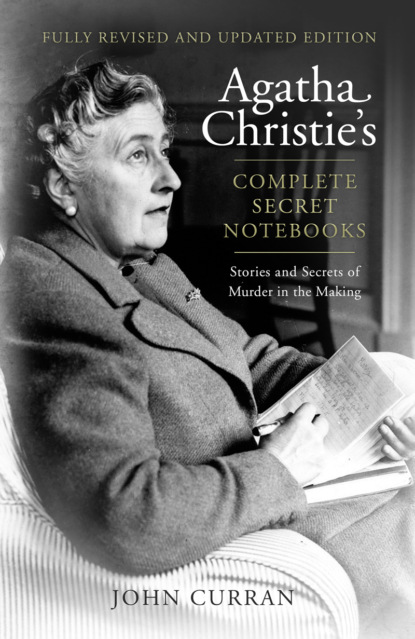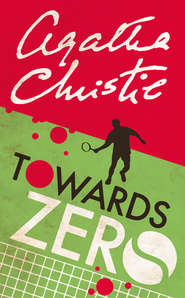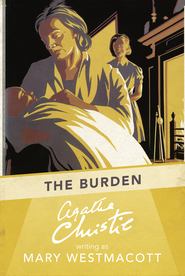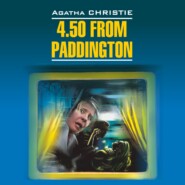По всем вопросам обращайтесь на: info@litportal.ru
(©) 2003-2024.
✖
Agatha Christie’s Complete Secret Notebooks
Настройки чтения
Размер шрифта
Высота строк
Поля
The murder method
To be avoided
Fairness
Both lists are very concerned with Fairness to the reader in the provision of information necessary to the solution, and with good reason; this is the essence of detective fiction and the element that distinguishes it from other branches of crime writing. Van Dine 1 and Knox 8 are, essentially, the same rule while Van Dine 2, 5, 15 and Knox 9 elaborate this concept.
Van Dine 1. The reader must have equal opportunity with the detective for solving the mystery.
Knox 8. The detective must not light on any clues that are not instantly disclosed to the reader.
Christie did not break these essentially identical rules, mainly because she did not need to. She was quite happy to provide the clue, confident in the knowledge that, in the words of her great contemporary R. Austin Freeman, ‘the reader would mislead himself’. After all, how many readers will properly interpret the clue of the torn letter in Lord Edgware Dies, or the bottle of nail polish in Death on the Nile, or the ‘shepherd, not the shepherdess’ in A Murder is Announced? Or who will correctly appreciate the significance of the smashed bottle in Evil under the Sun, or the initialled handkerchief in Murder on the Orient Express, or the smell of turpentine in After the Funeral?
Knox 9. The stupid friend of the detective, the Watson, must not conceal any thoughts that pass through his mind; his intelligence must be slightly, but very slightly, below that of the average reader.
It can be argued that the intelligence of the Watson character has to be below average because it is necessary for the Great Detective to explain his deductions to the reader through the Watson character. If the Watson were as clever as the detective there would be no need for an explanation at all. If Poirot were to look at the scene of the crime and announce, ‘We must look for a left-handed female from Scotland with red hair and a limp,’ and Hastings were to reply, ‘Yes, I see what you mean,’ the reader would feel, justifiably, more than a little exasperated. And, of course, this Rule overlaps with Knox 1 (see below) in the case of The Murder of Roger Ackroyd because Dr Sheppard in that famous case was acting as Poirot’s Watson.
Van Dine 2. No willful tricks or deceptions may be placed on the reader other than those played by the criminal on the detective.
This Rule seems to negate the whole purpose of a good detective novel where, surely, the challenge is the struggle between reader and writer. In essence, the writer says: ‘I present you with a challenge to spot the culprit before I am ready to reveal him/her. To make it easier for you, I will give you hints and clues along the way but I still defy you to anticipate my solution. However, I give you fair warning that I will use every trick in my writer’s repertoire to fool you but I still promise to abide by the fair play rule.’ As Dorothy L. Sayers said in the aftermath of the Roger Ackroyd controversy, ‘It is the reader’s business to suspect everybody.’
Into this category come Christie’s greatest conjuring tricks, including The Murder of Roger Ackroyd and Endless Night. In both these novels the reader is fooled into accepting the bona fides of a character who is taken for granted but not ‘seen’ in the same way as other protagonists are. The narrator is a ‘given’ whose presence and veracity the reader accepts unquestioningly; and, indeed, the narrator’s veracity in each case is above reproach. They do not actually lie at any stage, although there are certainly some ambiguous statements and judicious omissions whose significance is obvious only on a re-reading. In Chapter 27 of The Murder of Roger Ackroyd Dr Sheppard himself states:
I am rather pleased with myself as a writer. What could be neater, for instance, than the following? ‘The letters were brought in at twenty minutes to nine. It was just on ten minutes to nine when I left him, the letter still unread. I hesitated with my hand on the door-handle, looking back and wondering if there was anything I had left undone.’ All true, you see. But suppose I had put a row of stars after that first sentence! Would somebody then have wondered what exactly happened in that blank ten minutes?
All true; but not one reader in a thousand will stop to examine the details, especially not in the more innocent era of the 1920s, when the local doctor had a status just below that of the Creator.
Michael Rogers, in Endless Night, is also scrupulously fair in his account of his life. He tells us the truth but, as with Dr Sheppard, not the whole truth. But if we re-read Chapter 6, which recounts a telling conversation with his mother about ‘his plan’, what a new significance it all takes on when we know the truth. The ‘plan’, and even ‘the girl’, are no longer what we had originally supposed. This novel has much in common with The Mysterious Affair at Styles and Death on the Nile, as well as with The Man in the Brown Suit and The Murder of Roger Ackroyd. In the first two titles, two lovers collude, as in Endless Night, in the murder of an inconvenient wife, stage a dramatic quarrel and have seemingly foolproof alibis; The Mysterious Affair at Styles also features a poisoning which happens in the absence of the conspirators. In the latter two titles, the narrator (a diarist in The Man in the Brown Suit) is exposed as the villain.
Van Dine 5. The culprit must be determined by logical deduction – not by accident, coincidence or unmotivated confession.
An example of confession (albeit not unmotivated) as a solution in Christie’s output is And Then There Were None, where the entire explanation is presented in the form of a letter of confession. In this most ingenious novel, Agatha Christie set herself an almost insoluble problem: how to kill off every character in the book and yet have an explanation at the end. The only solution would seem to be the one that she actually adopted: a confession. Confessions do feature in other novels – Lord Edgware Dies, Why Didn’t They Ask Evans?, Crooked House – but only as confirmation of what has already been revealed, while Curtain: Poirot’s Last Case contains one of the most shocking confessions in literary history.
Van Dine 15. The truth of the problem must be at all times apparent – provided the reader is shrewd enough to see it.
Although tautological, this is intended as an elaboration of the earlier Rules regarding fairness to the reader. One of the clearest examples of this in the Christie output is Lord Edgware Dies where a very audacious plot is, in retrospect, glaringly obvious. Other blindingly evident clues include the final words – ‘Evil Eye … Eye … Eye …’ – of Chapter 23 of A Caribbean Mystery; or the description of Lewis Serrocold emerging from the study in Chapter 7 of They Do It with Mirrors; or the thoughts of Ruth Lessing in Chapter 2 of Sparkling Cyanide after her meeting with Victor; or, most controversially of all, Dr Sheppard’s leave-taking of Roger Ackroyd in Chapter 4 of The Murder of Roger Ackroyd.
Knox 6. No accident must ever help the detective, nor must he ever have an unaccountable intuition that proves to be right.
There are, unfortunately, a few examples in Christie’s oeuvre of ‘deductions’ not based on any tangible evidence. It must be conceded that they can only be accounted for only by intuition. How, for example, does Miss Marple alight on Dr Quimper in 4.50 from Paddington? And only the ‘Divine Revelation’ forbidden by the Detection Club Oath can explain how Poirot knows that Lady Westholme from Appointment with Death spent time in prison in her early life.
The crime
The crime itself did not feature strongly in the Rules, although Christie enjoyed the challenge of Van Dine 18 below.
Van Dine 7. There simply must be a corpse in a detective novel.
Although the first detective novel, Wilkie Collins’ The Moonstone (1868), concerns a robbery rather than a murder, a mysterious death is the sine qua non of most detective novels. Although she broke this Rule often in her short story output, Christie almost never short-changed her readers in novel form, generously providing a multitude of corpses in And Then There Were None, Death Comes as the End and Endless Night – but there is no corpse discovered in Five Little Pigs.
Van Dine 18. A crime in a detective story must never turn out to be an accident or a suicide.
The rejection of this Rule could mean a huge disappointment for a reader who discovers, after 250 pages, that the death under investigation is not a crime at all. See how cleverly Agatha Christie overcomes this in Taken at the Flood, when none of the deaths is what it first seems. The seeming murder of ‘Enoch Arden’ is an accident, the death of Major Porter is suicide and the seeming suicide of Rosaleen Cloade is murder. In one brilliant plot she effortlessly breaks both aspects of Van Dine’s Rule. In the Poirot cases ‘The Market Basing Mystery’ and ‘Murder in the Mews’ – both essentially the same story, the latter being a more elaborate version, of the former – we have not murder disguised to look like suicide but suicide disguised to look like murder. But there is another twist; the real murder plan is to get someone else hanged (and therefore murdered) for a crime they did not commit.
Van Dine 19. The motives for all the crimes in detective stories should be personal.
This Rule essentially outlawed murder committed for ideological reasons, with Van Dine suggesting that such murders should be confined to secret-service stories. Appropriately, this type of plot does feature in some of Christie’s international thriller novels – They Came to Baghdad, Destination Unknown, Passenger to Frankfurt – as well as some of the early titles – The Secret Adversary, The Secret of Chimneys – but it is not a feature of her detective fiction. But into which category does the motive for the first murder in Three Act Tragedy fall?
The detective
The figure of the detective occupied both writers: Van Dine 4 and Knox 7 are identical, although Van Dine added further embellishments in Rules 6 and 9. Some of Christie’s greatest triumphs involve these Rules; she has joyously shattered all of them.
Van Dine 4. The detective himself, or one of the official investigators, should never turn out to be the criminal.
Knox 7. The detective must not himself commit the crime.
From the very beginning of the detective novel the unmasking of the official investigator was considered a valid ploy. The Mystery of the Yellow Room (1907) by Gaston Leroux, creator of The Phantom of the Opera, is credited in An Autobiography as being one of the two detective novels that Christie had enjoyed before embarking on The Mysterious Affair at Styles. It features one of the earliest examples of the criminal investigator, and in The Clocks, Poirot is unstinting in his praise for this groundbreaking novel. Some of Christie’s most deftly plotted books featured this ploy. Hercule Poirot’s Christmas was chosen by Robert Barnard, in his Agatha Christie: A Talent to Deceive (1980), as one of the three best novels of Dame Agatha’s career, and indeed it is a classic Golden Age detective story: a snowbound country mansion, a murder, a group of suspects, a killer and a solution, breathtaking in its daring. An early foreshadowing of this ploy can also be found in ‘The Man in the Mist’ in Partners in Crime.
The Mousetrap, in both its stage and novella versions, and its earlier incarnation as the radio play Three Blind Mice, all unmask the investigator as the villain. Sergeant Trotter arrives like a deus ex machina in Monkswell Manor and is accepted unquestioningly both by its snowbound inhabitants and by the audience, although he is an imposter and not an actual policeman. In the late 1940s and early 1950s the policeman, like the village doctor, was perceived as uncorrupted and incorruptible, although modern audiences are more likely to spot this type of villain than their more innocent counterparts of an earlier age.
In Curtain: Poirot’s Last Case, Agatha Christie played the last and greatest trick of all on her readers; and they admired her all the more for it. The ultimate sleight of hand from the supreme prestidigitator in the crime-writing pantheon, who but Agatha Christie would have thought of, and then carried out, this almost sacrilegious trick? After a half century of partnership, she unmasks Poirot as the killer. Certainly the book is contrived (which detective story is not?), but only the most churlish of readers would complain after such a dazzling culmination of two careers.
Van Dine 6. The detective novel must have a detective in it.
This is a perfectly reasonable Rule. But Agatha Christie made a career out of breaking the Rules, reasonable or otherwise, and she managed to demolish this one also. The most famous and best-selling crime novel of all time, And Then There Were None, has no detective, although, arguably, every character in the book is Victim, Murderer and Detective …; Death Comes as the End is also an example of a detectiveless detective novel. Its setting of Ancient Egypt 4,000 years ago does, however pre-date the Rules by some time.
Van Dine 9. There must be but one detective.
In the sense that Hercule Poirot and Miss Marple never meet between the covers of any of her books Agatha Christie abided by this Rule, but in many novels they work in close collaboration with the official investigators. And other titles feature an unofficial coming-together of, effectively, suspects in order to solve the crime. Three Act Tragedy, Death in the Clouds and The ABC Murders find Poirot working alongside some of those under suspicion in order to arrive at the truth. And in all three cases one of his group of collaborators is unmasked in the last chapter. Coincidentally or otherwise, these novels were all published in the same 12-month period between January 1935 and January 1936.
The murderer
The other important figure, the murderer, also exercised both rule-makers. But Christie had broken most of these Rules before either Knox or Van Dine even compiled them.
Knox 1. The criminal must be someone mentioned in the early part of the story, but must not be anyone whose thoughts the reader has been allowed to follow.
While adhering to the former part of this injunction, the circumvention of the latter became almost a motif throughout Agatha Christie’s writing life. As early as 1924 with The Man in the Brown Suit she neatly and unobtrusively breaks this rule, via Sir Eustace Pedler’s diary. The most famous, or infamous, example is, of course, The Murder of Roger Ackroyd, her first for the publisher Collins. The book immediately ensured her fame and success and it is safe to assert that, even if she had never written another word, her name would still be remembered today in recognition of this stunning conjuring trick. Forty years later she replayed it but in such a different guise that most of her readers were not aware of the repetition. While a doctor in a small 1920s village narrates The Murder of Roger Ackroyd, a young, working-class, charming ne’er-do-well narrates Endless Night. But it is essentially the same sleight of hand at work. (See also ‘Fairness’ (#ulink_09d5823f-1819-508e-9c6d-f3c0ed8e8443) above.)
More subtly, we share the thoughts of a group of characters, which includes the killer, in And Then There Were None, but without identifying which thoughts belong to which character (Chapter 11). And in The ABC Murders we think we are sharing the thoughts of a serial killer when, in fact, he is the innocent dupe of the real killer. Less overtly, we are given an insight into the minds of the killer in Five Little Pigs, Towards Zero and Sparkling Cyanide.
Van Dine 10. The culprit must turn out to be a person who has played a more or less prominent part in the story.
Never one to cheat her readers, this is one of the Rules that Christie did not break. She never unmasked the second cousin of the under-housemaid as the killer in the last chapter. Taking her cue from ‘The Purloined Letter’, the Queen of Crime hid her murderers in plain sight.
Van Dine 11. A servant must not be chosen as the culprit.
This is not mere social prejudice (although there is plenty of that in the work of Van Dine himself) but a practical solution to the problem of the unmasking, in the last chapter, of a member of the domestic staff whose presence in the novel was fleeting at best. Consider how Christie overcame this stricture. Kirsten Lindstrom in Ordeal by Innocence is, strictly speaking, a domestic servant but her significance to the Argyle family can be interpreted as placing her outside this category. But it is as a servant that we meet, and continue to perceive, her. This same consideration applies to Miss Gilchrist in After the Funeral; witness the telling scene at the denouement when she bitterly recriminates the Abernethie family. Gladys, in A Pocket Full of Rye, is a clearer example of domestic servitude; indeed, it is her status as such that makes her a vital element of Lance’s murderous plan. In defence of Christie’s oft-criticised attitude to domestic servants, it is the subsequent death of Gladys that causes Miss Marple to arrive at Yewtree Lodge to avenge the death of a foolish and gullible former maid. And the closing pages of the book, as Miss Marple reads a letter from Gladys written just before her murder, are very affecting. The same plot device, and much of the same plot, can be seen in the earlier short story ‘The Tuesday Night Club’ in The Thirteen Problems.
Van Dine 17. A professional criminal must never be shouldered with the guilt in a detective novel.

















